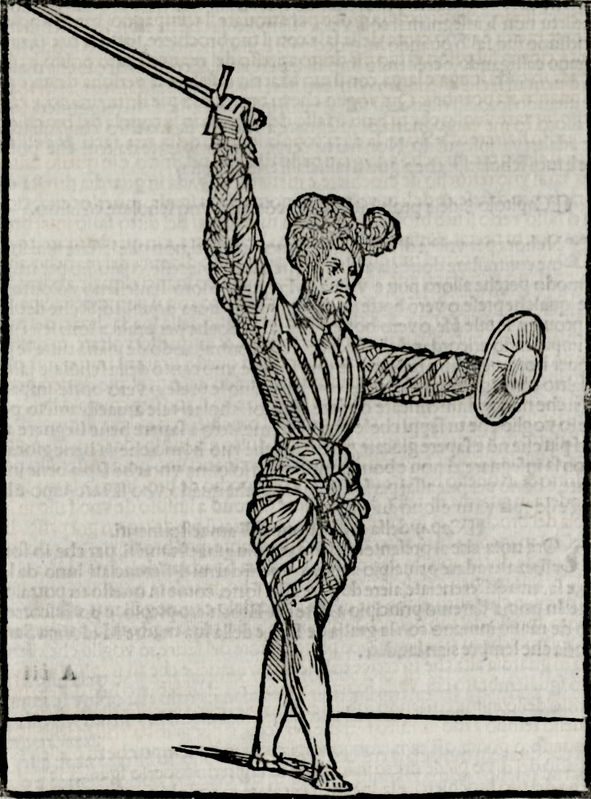Partner Tactics in Solo Forms

Over the past two months on DuelloTV, the weekly Scholars Live class has been a part-by-part learning and tactical breakdown of the First Assault of Sword & Buckler by Achille Marozzo (1536). This assault contains seven parts including an entrance and exit from play.
Secret Partner Actions in a Mostly Solo Form

Marozzo was a sword instructor in Bologna in the early 1500s who presented many different martial forms (known as “assaults”) in his 1536 book: Opera Nova dell’Arte delle Armi (New Work on the Art of Arms). Marozzo’s assaults, which spanned many disciplines from sword secondaries to two-handed swords to polearms—though often performed by a single practitioner these days—are not explicitly solo forms. In fact all of them include brief instructions for a partner who periodically throws a blow or thrust at the form’s primary performer inducing them to make a defense before continuing with the action.
The interesting thing is that these partner moments are few and far between. You might throw 4–8 blows before this opponent attempts a counter-attack, in some cases they might not even get that. No defenses or other attacks are described for the erstwhile partner to perform.
Though it is possible that the opponent just backs up a lot, creating space to eventually throw a returning blow, it seems unlikely. More likely is that there are defenses and potential counter-threats throughout that are simply foiled by each progressive action. Marozzo does periodically tell you to throw a blow to lure an opponent to cover one place and uncover another (though with no detail on how this happens).
A Single Simple Attack
A complex series of actions, like those seen in assaults, need defense and counter-threat to make sense. Any compound attack begins from a single simple attack. If your opponent has no defense for the first attack (your first intention), nothing more is needed. Hit them with that and be done.
Each defense or counter-attack is what demands the next piece of the form, the next counter. A good form demonstrates a series of obedience-inducing threats. Seeing the opponent in a particular guard, you make an attack that requires they defend in a particular way. In response to that defense you make your second intention, which in turn can only be responded to in a very limited number of ways, each of those countered by your third intention, etc.
If any particular counter is omitted on the part of the opponent, the form should end. Meaning you should successfully hit them.
The concept of putting an opponent into “obedience” and forcing their next action is explored in this mini-lesson on the descending thrust.
Making Up Side B
In this next lesson clip from my recent live series on Marozzo’s first assault I share Part 1 of the assault as a solo form. With a partner I then break down how to see the form as an action to a counter-action, to a counter-counter action and so forth.
Take a few moments to watch this clip and explore this piece of the first assault. You’ll be amazed at how many techniques worth practicing are contained within it.
Dive Into the Whole Series
Scholars Live! DuelloTV Subscribers can access the entire series of seven classes through DuelloTV here. Through the lessons you’ll learn the entire seven-part form and then break it down part by part with the tactical actions contained in each. I demonstrate everything with a partner and play a live video partner for those following along at home.
Join: Achille Marozzo’s First Assault Solo & Partnered
Scholars Club subscribers can access a series of lessons for learning the first three parts of Marozzo’s First and Second Assault of Sword and Buckler as well as the mechanics fundamentals contained within them.
Watch: Assalti with Sidesword




